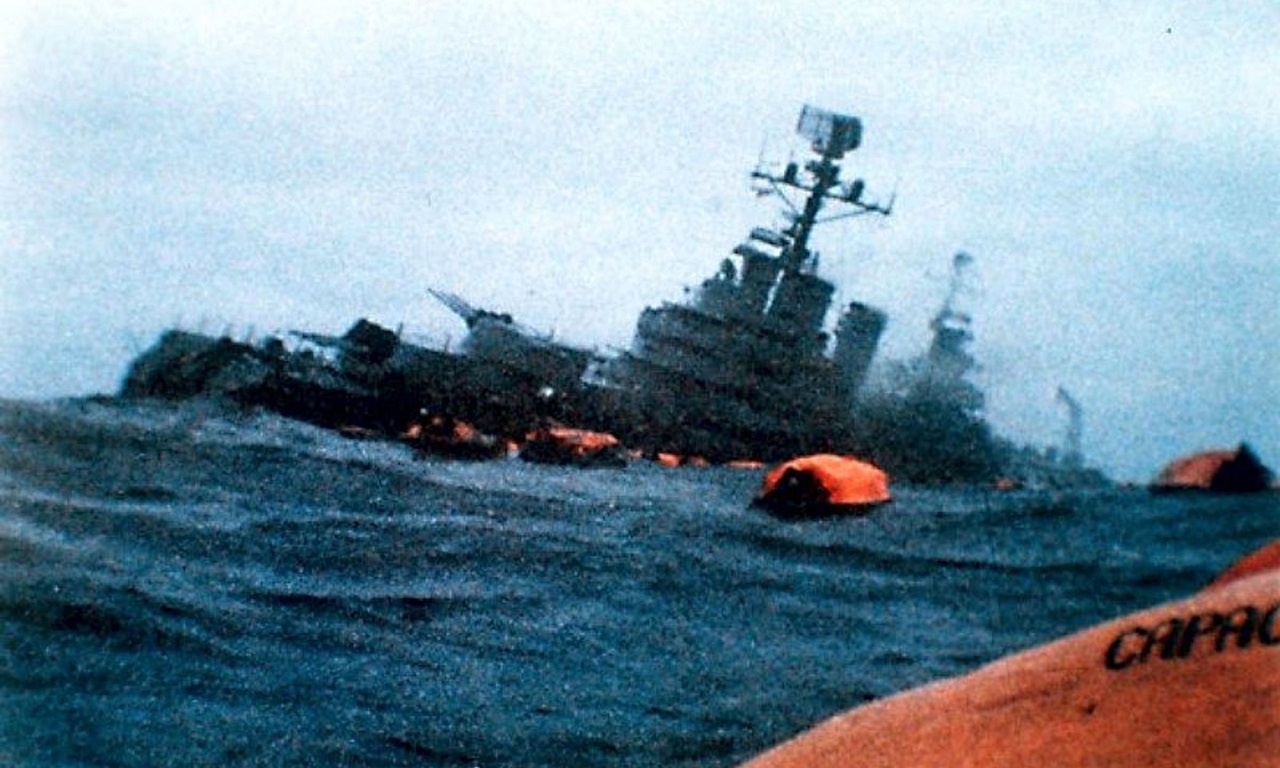The Death of the General Belgrano – This year marks the 40th anniversary of the Falklands War between Great Britain and Argentina, or as the latter nation’s citizens prefer to call it, La Guerra de las Malvinas.
The naval campaign of that war included a significant milestone in seapower history: On May 2, 1982, the Argentine cruiser ARA General Belgrano was sunk by a Royal Navy submarine, the HMS Conqueror. The incident remains history’s last known sinking of a surface warship by a submarine, and the General Belgrano is the only ship to be sunk during military operations by a nuclear-powered submarine.
Profile of a Predator: The HMS Conqueror
The Conqueror was third in the line of Churchill-class nuclear-powered fleet submarines. Commissioned in 1971 and serving until 1990, she had a 5,400-ton displacement, sported six 21-inch torpedoes tubes, and boasted a top speed of 21 knots. The Conqueror was built by Cammell Laird at Birkenhead near Liverpool, and it holds the distinction of being the last nuclear sub built at that shipyard. At the time of her history-making Falkland Islands engagement, she was skippered by then-Comm. Chris Wreford-Brown, now a retired captain.
Profile of the Prey: The ARA General Belgrano
The General Belgrano started off her star-crossed life as the USS Phoenix (CL-46), part of the WWII-era run of Brooklyn-class light cruisers, and it was present at Pearl Harbor during the Day of Infamy. Commissioned in 1938 and decommissioned by the U.S. Navy in 1946, she was transferred to the Argentines in 1951. In 1956, the ARA officially renamed her General Belgrano (C-4) in honor of Argentine founding father Manuel Belgrano.
Belgrano had a 12,300-ton displacement and bristled with fifteen 6-inch (150mm) main guns, eight 5″/25 caliber (127mm) secondary guns, and a battery of 40mm and 20mm anti-aircraft guns. At the time of her sinking, she was under the command of Capt. Hector Bonzo.
“Sink It!”
The sinking of the General Belgrano was not without controversy, and a lot of that controversy lingers to this day in the hearts of many Argentines who still consider the act a war crime.
The reason for such controversy is that at the time of the sinking, General Belgrano was outside of, and seemingly sailing away from, the exclusion zone imposed by the British on all shipping within the area of operations. However, then-British Prime Minister Margaret Thatcher — known as The Iron Lady with bloody good reason — authorized the decision to sink the Argentine vessel, saying the cruiser and associated destroyers posed a very clear threat to British forces.
The die was cast. At 2:57 p.m. Falkland Islands time, Conqueror fired three Mark VIII Mod 4 torpedoes, two of which hit General Belgrano. Twenty minutes later, Capt. Bonzo gave the order to abandon ship. Seven-hundred and seventy-two of the ship’s crew were rescued, but 323 Argentine sailors perished. After the sinking, Argentine ships returned to their bases and played no major role for the rest of the conflict.
Regarding the war crime debate, Capt. Bonzo — contrary to the sentiments of so many of his countrymen — publicly refuted the accusations leveled against his British adversaries:
“The sinking of the cruiser was an act of war. It was not a crime. It was a licit, most unfortunate and lamentable action. Crime is war. We were in the front and we suffered the consequences. As of April 30 I was given orders to open fire, and if the submarine should have been before me having emerged for repairs, I would have opened fire with the fifteen cannons until it sunk.”
HMS Conqueror returned home to her base at Faslane, Scotland, sporting the Jolly Roger adorned with torpedoes – a custom for Royal Navy submarines after obtaining a kill. Comm. Wreford-Brown—who received the Distinguished Service Order for his accomplishment—wryly stated that the Royal Navy “had spent thirteen years preparing me for such an occasion. It would have been regarded as extremely dreary if I had fouled it up.”
Capt. Hector Bonzo passed away in April 2009 at the age of 76. Capt. Christopher Louis Wreford-Brown remains alive today at the ripe old age of 76.
Christian D. Orr is a former Air Force officer, Federal law enforcement officer, and private military contractor (with assignments worked in Iraq, the United Arab Emirates, Kosovo, Japan, Germany, and the Pentagon). Chris holds a B.A. in International Relations from the University of Southern California (USC) and an M.A. in Intelligence Studies (concentration in Terrorism Studies) from American Military University (AMU). He has also been published in The Daily Torch and The Journal of Intelligence and Cyber Security.

